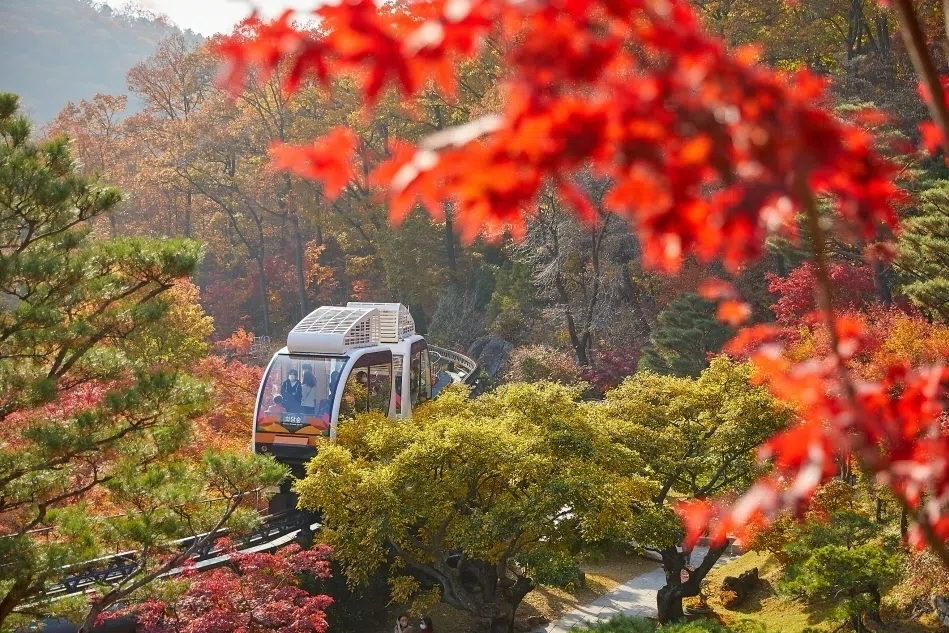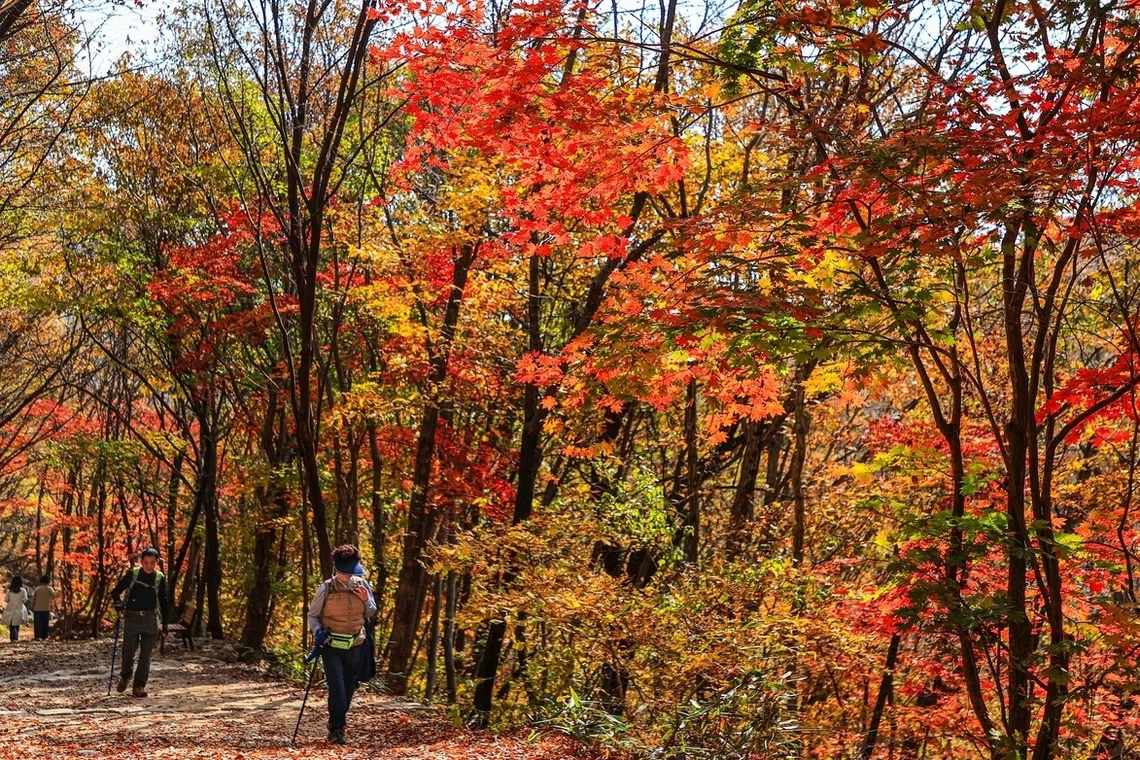Set off on a golden journey through South Korea in autumn
Sign up now: Get ST's newsletters delivered to your inbox

Hwadam Botanic Garden in Gwangju will host its annual Fall Festival, showcasing over 400 varieties of maples from Oct 24 to Nov 16.
PHOTO: KOREA TOURISM ORGANISATION
Follow topic:
SEOUL - As summer fades, Korea transforms into a breathtaking canvas of golden yellow, crimson red and deep auburn hues.
With the fall foliage season just around the corner, there’s no better time to explore Korea’s natural beauty.
Whether you’re trekking up misty mountain paths or strolling through tranquil botanical gardens, these four autumn destinations offer a feast for the eyes and a soothing retreat for the soul.
Naejangsan National Park in Jeongeup, North Jeolla Province
If you had to pick just one place in Korea to witness the full splendour of autumn, it would be Naejangsan.
This mountain park is home to some of Korea’s most brilliant fall foliage.
Every autumn, a blanket of fiery red and orange maple leaves carpets the trails, transforming the park into a painter’s palette of colour.
At the heart of the park lies Naejangsa, a serene Buddhist sanctuary dating back to AD636.
Encircled by the colourful peaks of Naejangsan, the temple becomes especially picturesque in late October and early November, when the foliage reaches its peak.
Other must-see sites include Dodeok Falls, Geumseon Falls and nearby Baegyangsa, a Buddhist temple.
Just outside the park is Naejangsan Maple Ecology Park, where visitors can walk through maple tunnels and learn about native species in the Maple Experience Exhibition Centre.
November is the best time to visit, with special seasonal exhibitions and events planned.
A marketing manager at the Korea Tourism Organisation’s Taipei Office strongly recommends Naejangsan.
“The travel destination renowned for its natural beauty in North Jeolla Province is undoubtedly Jeongeup.
“In Naejangsan National Park, you can witness the mountains adorned with yellow and red leaves every fall, creating a breathtaking tableau along with the temple scenery.
“Jeongeup is also celebrated for its Korean beef, offering visitors the chance to indulge in exquisite flavors. I hope that travelers to Korea will relish both the scenery and the culinary experiences in Jeongeup,” she said.
Piagolgyegok in Jirisan

This year’s Piagol Maple Festival will be held Nov 1 to Nov 2, featuring forest concerts, traditional ceremonies and other cultural events.
PHOTO: GURYE-GUN.GO.KR
Known as one of the ten scenic highlights of Korea’s largest national park, this valley is especially famous for its “sam-hong” view, meaning “three reds” – when the mountains, waters and even people seem bathed in crimson during the peak foliage season.
The trail into the valley stretches about 6 kilometres from the entrance to Samhongso Pond, a gentle stroll ideal for families.
Along the way, hikers pass historical sites like the temple Yeongoksa, as well as tranquil stops like Yeonjudam.
For those seeking a more rigorous hike, the trail continues another 2 kilometres to Imgeollyeong Pass.
The name “Piagol” has a layered history – originating from local fields of millet and later associated with the tragedy of civil conflict during the Korean War.
Today, it’s a place of peace and reflection, hosting the Piagol Maple Festival every fall. This year’s festival will be held Nov 1 to Nov 2, featuring forest concerts, traditional ceremonies and other cultural events.
Uiryeong Trail in Bukhansan
If you’re looking for vibrant fall colours without venturing too far from Seoul, Bukhansan’s Uiryeong Trail is the perfect escape.
Located just a 30-minute walk from Bukhansan Ui Station on the Seoul Subway Ui-Sinseol Line, this trail offers moderate difficulty, breathtaking views and a touch of history.
Once a military-restricted area, Uiryeong-gil reopened to the public in 2009 and is now considered one of Bukhansan’s most ecologically preserved zones.
Towering trees and vibrant foliage shade the path, which takes about two hours round-trip and ends in the picturesque Jangheung area of Gyeonggi Province.
The trail operates on a reservation system, with daily visitor caps (about 500 people) to preserve the ecosystem and ensure a relaxed experience.
Entry is permitted only via QR code provided through KakaoTalk, an instant messaging and online services platform, after booking on the Korea National Park Service website.
No special hiking gear is required – just comfortable clothes and good walking shoes. Don’t miss the Obong viewpoint, where you can take in panoramic views of the rugged mountain landscape set ablaze by autumn leaves.
Hwadam Botanic Garden in Gwangju, Gyeonggi Province
If you prefer curated beauty in a more accessible setting, Hwadam Botanic Garden in Gwangju, Gyeonggi Province, offers an idyllic fall escape.
Just a 40-minute drive from Seoul or 90 minutes by public transportation, this eco-friendly garden is home to over 4,300 species of domestic and imported plants, spread across 17 themed zones.
Part of Konjiam Resort and developed by the LG Evergreen Foundation, the garden is a model of environmental sustainability and forest restoration.
The name “Hwadam” translates to “friendly communication”, reflecting the garden’s mission to connect people with nature.
From Oct 24 to Nov 16, the garden will host its annual Fall Festival, showcasing over 400 varieties of maples.
To ensure a comfortable visit, entry is limited to 1,000 people per hour and 10,000 per day, with reservations required.
Visitors can either walk the scenic deck paths or hop on the eco-monorail, which circles the park and offers sweeping views of the fall landscape. THE KOREA HERALD/ASIA NEWS NETWORK

